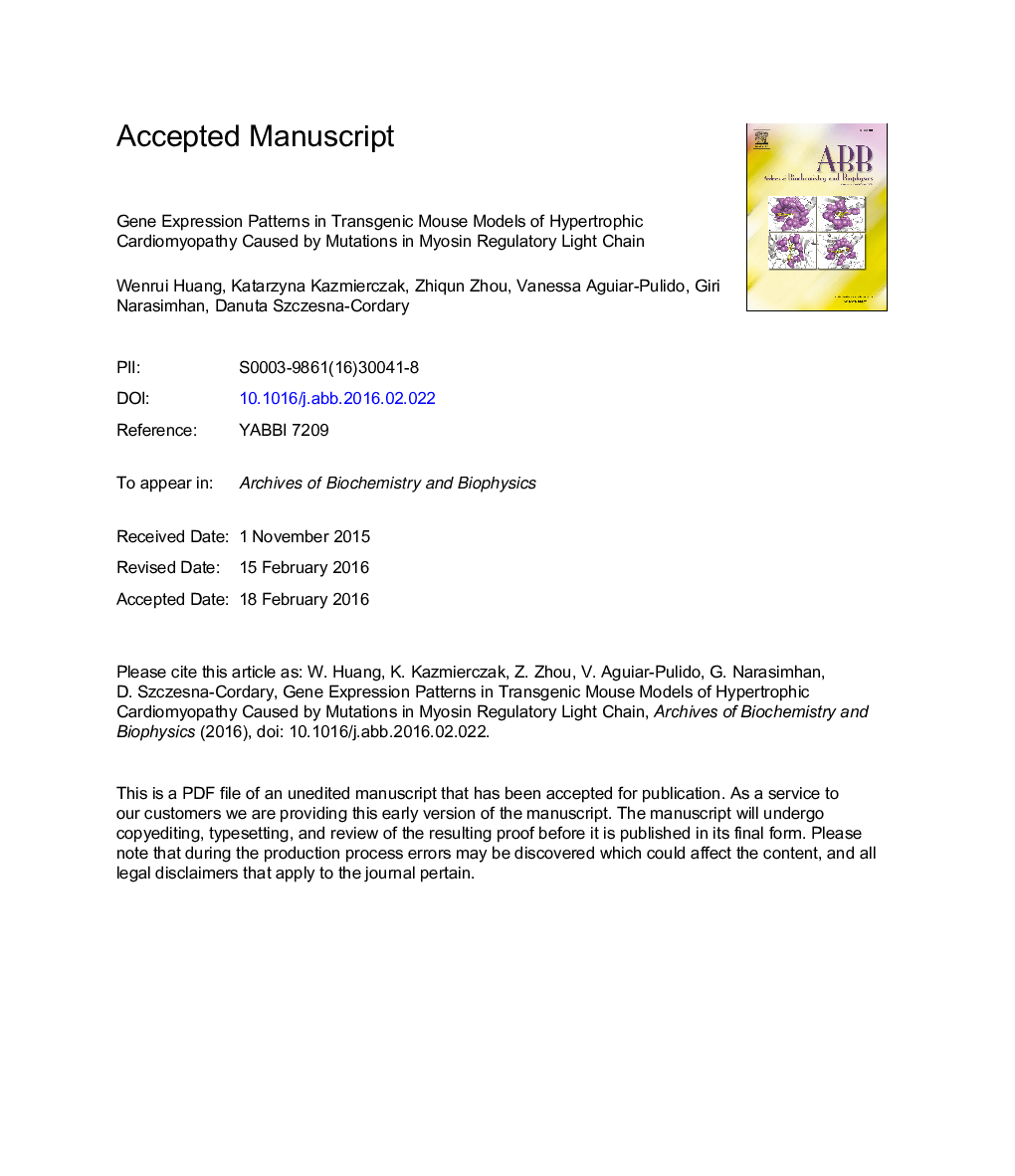| Article ID | Journal | Published Year | Pages | File Type |
|---|---|---|---|---|
| 8289329 | Archives of Biochemistry and Biophysics | 2016 | 35 Pages |
Abstract
Using microarray and bioinformatics, we examined the gene expression profiles in transgenic mouse hearts expressing mutations in the myosin regulatory light chain shown to cause hypertrophic cardiomyopathy (HCM). We focused on two malignant RLC-mutations, Arginine 58âGlutamine (R58Q) and Aspartic Acid 166 â Valine (D166V), and one benign, Lysine 104 â Glutamic Acid (K104E)-mutation. Datasets of differentially expressed genes for each of three mutants were compared to those observed in wild-type (WT) hearts. The changes in the mutant vs. WT samples were shown as fold-change (FC), with stringency FC â¥Â 2. Based on the gene profiles, we have identified the major signaling pathways that underlie the R58Q-, D166V- and K104E-HCM phenotypes. The correlations between different genotypes were also studied using network-based algorithms. Genes with strong correlations were clustered into one group and the central gene networks were identified for each HCM mutant. The overall gene expression patterns in all mutants were distinct from the WT profiles. Both malignant mutations shared certain classes of genes that were up or downregulated, but most similarities were noted between D166V and K104E mice, with R58Q hearts showing a distinct gene expression pattern. Our data suggest that all three HCM mice lead to cardiomyopathy in a mutation-specific manner and thus develop HCM through diverse mechanisms.
Keywords
Related Topics
Life Sciences
Biochemistry, Genetics and Molecular Biology
Biochemistry
Authors
Wenrui Huang, Katarzyna Kazmierczak, Zhiqun Zhou, Vanessa Aguiar-Pulido, Giri Narasimhan, Danuta Szczesna-Cordary,
